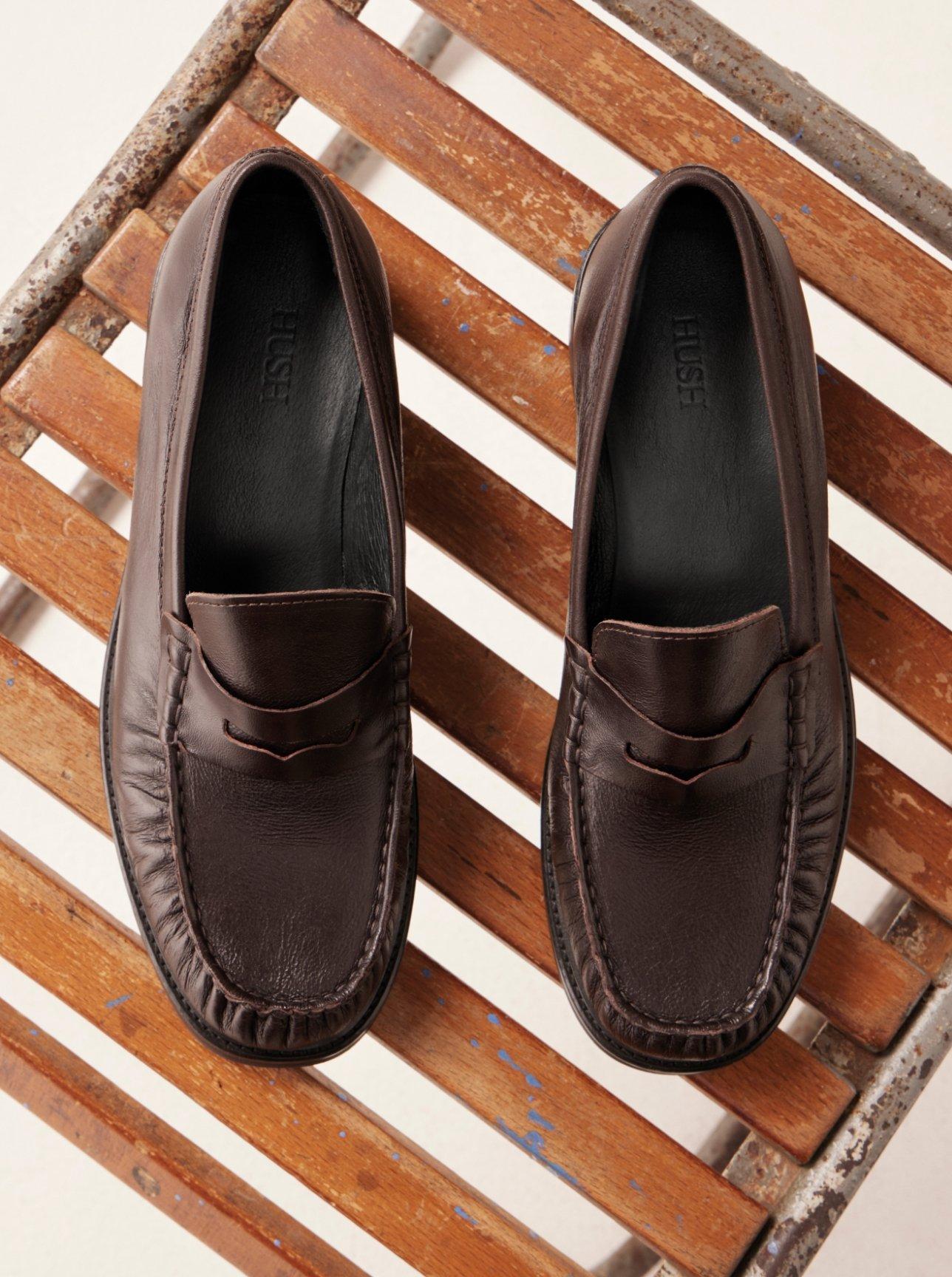THE RISE OF THE LOAFER
How to wear them now

Words
VICTORIA MOSS
The word classic is often thrown around in fashion but when it comes to the loafer, it really is a true design stalwart, understated, deceptively simple yet always stylish. It’s hard to think of another wardrobe piece that’s worn by everyone from Saint-Tropez sun seekers to city boys, that we wore to school and yet still covet now. It’s a true aesthetic egalitarian that has been seen on the feet of everyone from Grace Kelly and Jane Birkin to Kate Moss and A$AP Rocky.
The charm of this classic is two-fold; they add an easy smartness, but can also be used to invert any outfit. In a world where codes of dressing are all but demolished (never has what we wear been more casual), its easygoing energy works just as well with a midi skirt as track pants, which is perhaps why it’s currently having a well deserved moment in the sun. That versatility speaks to how we all dress now. We need multi-tasking pieces which work across events and wardrobe options. We want to shop mindfully and with purpose – it isn’t the time for extraneous items to be worn once and forgotten.
Perhaps the versatility of loafers has something to do with their inception, where inspiration and function crossed borders. In the fifties and sixties, Kelly – along with JFK and Audrey Hepburn – cemented the style as a critical piece of that all-American preppy look. The style flourished in the quarters of Ivy League colleges as much as it did in Europe, where Aldo Gucci popped on a gilt horsebit to create a new luxury iteration of the shoe. More informal than a lace-up brogue but smarter than a plimsoll, it’s a fashion staple that skirts between two worlds, adding a light polish to relaxed looks (think chinos and polo shirts), as well as happily grounding tailoring for those happier and more comfortable in a slip-on flat than a heel.
Since then, the loafer has never lost its appeal. Their unisex appeal meant they appealed to sixties power couple Serge Gainsbourg and Jane Birkin; he wore his with slightly cropped trousers and an undone shirt, while she wore hers with flared jeans and a T-shirt. In the Nineties, Princess Diana was wedded to her suede Tod’s for moments of serious work (she even walked across a minefield in a pair). Design developments have seen them made chunkier, perhaps with a heel, sometimes in clashing colourways.
Not all loafers are made the same, and different styles work in different ways. This season why not swap out a trainer for a soft, suede loafer? The almond toe of Hush’s take is just right for a longer length trouser which will gently graze the top of it. If you’re into a slightly more cropped horseshoe shaped or barrel-leg jean, then add a sock – keep it within the same colour palette for a smooth finish. Edging into the scene is the boat-shoe loafer, which has a sweet, lace-up front detail to add a point of difference. This style is just starting to re-emerge back onto the fashion stage, and it’s great under a loose jean for a hint of slouchy Sloane style, or with more fitted cream or white denim to really play up its nautical connotations.
The penny loafer is perhaps the hardest working shoe you can find. She’s smart with a pleated skirt or suit; cute with a maxi (try a black version with grey socks or tights and black loafers to maximise the pure school-ness of it), and fun with denim or even track pants (really), for more casual looks. If you want to make more of a statement, play into an eighties spirit with a loud sock – red with a black loafer is a playful flex here with a more fitted, cropped pair of jeans or trousers. It’s always worth leaning into a mood; rugby shirts and slightly billowing shirting are very on point at the moment. Sometimes clichés exist for a reason, embrace it all.
Victoria Moss is a freelance fashion editor and writer. Read more from her via her weekly newsletter, Everything Is Content.








